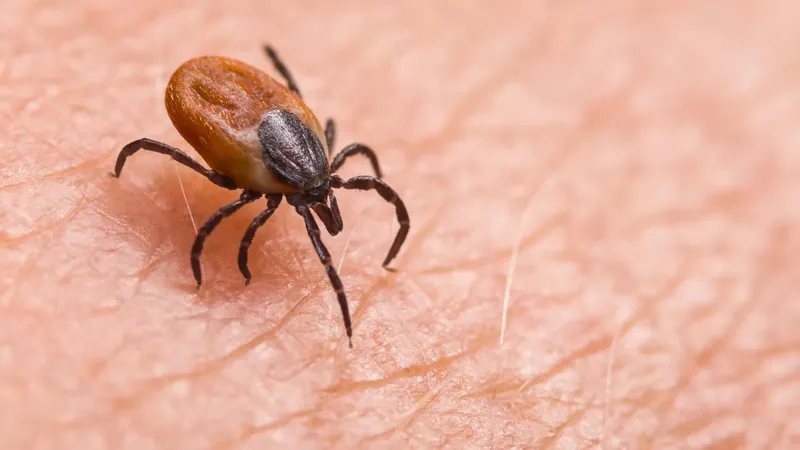
Revolutionary Discovery: Can Ticks Hold the Key to Stopping Lyme Disease?
2025-07-04
Author: Sarah
In a groundbreaking study from the College of Veterinary Medicine, researchers have unveiled a fascinating secret about ticks that could potentially halt the spread of Lyme disease. The findings, published in the prestigious journal Proceedings of the National Academy of Sciences, reveal how the bacteria responsible for this illness manipulate a protein within ticks to aid their own survival.
Unlocking the Mystery of Ticks and Disease
Most scientific research has focused on how these bacteria, including Borrelia burgdorferi—the culprit behind Lyme disease—interact with human and animal hosts. However, Kaylee Vosbigian, a doctoral student and lead author of the study, emphasizes the significance of understanding how these pathogens thrive within ticks. 'What we have found could open the door to targeting these pathogens in ticks before they pose a threat to people,' she explains.
The Cholesterol Heist!
The research centered on the blacklegged tick, known scientifically as Ixodes scapularis. This tiny yet dangerous creature is essential in the transmission of important pathogens. The study demonstrates how an activated protein, ATF6, triggers the formation of another protein, stomatin, which assists in moving cholesterol through tick cells. Ticks are unable to produce their own cholesterol, making them reliant on hijacking this essential fat from their hosts. The bacteria cleverly exploit this process, essentially stealing the cholesterol they need to thrive.
New Strategies for Disease Prevention?
By inhibiting the production of stomatin and consequently limiting cholesterol availability, researchers found a significant reduction in bacterial growth. This crucial discovery suggests that targeting the ATF6-stomatin pathway may pave the way for innovative strategies to interrupt the disease cycle before pathogens can be transmitted to humans or animals.
A Revolutionary Research Tool: ArthroQuest
In a bid to advance research, Vosbigian introduced ArthroQuest, a cutting-edge web-based platform designed to help scientists examine the genomes of various arthropod vectors. This tool allows researchers to identify transcription factor binding sites, like ATF6, which regulate gene activity in ticks and similar creatures, potentially leading to major breakthroughs in understanding and controlling disease spread.
A Broader Implication for Public Health
Vosbigian’s findings indicate that the control of stomatin by ATF6 is not unique to ticks; it’s observed in various blood-feeding arthropods. Many vector-borne pathogens, such as those causing malaria, are known to rely on cholesterol from their hosts. This could mean that the insights from this research may have far-reaching implications across multiple disease systems affecting global health.
Supported in part by a National Institutes of Health grant, this study marks a significant leap toward understanding how we can potentially curb the growing threat posed by Lyme disease and other tick-borne illnesses. As we continue to grapple with public health challenges, the answers may lie in the uncharted territory of the tick's biology.

 Brasil (PT)
Brasil (PT)
 Canada (EN)
Canada (EN)
 Chile (ES)
Chile (ES)
 Česko (CS)
Česko (CS)
 대한민국 (KO)
대한민국 (KO)
 España (ES)
España (ES)
 France (FR)
France (FR)
 Hong Kong (EN)
Hong Kong (EN)
 Italia (IT)
Italia (IT)
 日本 (JA)
日本 (JA)
 Magyarország (HU)
Magyarország (HU)
 Norge (NO)
Norge (NO)
 Polska (PL)
Polska (PL)
 Schweiz (DE)
Schweiz (DE)
 Singapore (EN)
Singapore (EN)
 Sverige (SV)
Sverige (SV)
 Suomi (FI)
Suomi (FI)
 Türkiye (TR)
Türkiye (TR)
 الإمارات العربية المتحدة (AR)
الإمارات العربية المتحدة (AR)